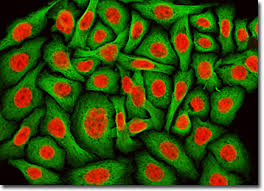Normal Cells vs Cancer Cells vs HeLa Cells
Cells in human beings or animals are numerous. Through years of researches, cells can be identified into many classes according to their different characteristics. So there are many differences between different cells. In this post, we are going to discuss the differences between normal cells and cancer cells, differences between cancer cells and HeLa cells. Firstly, the definition of normal cells is clear to everyone. Its main feature differs from cancer cells is “growth control”, which means the ability of normal cells to make new cells is controlled seriously by their mechanisms and cell’s environment. However, as for cancer cells (tumor cells), they all have mutations, which allow uncontrolled growth by negating those control mechanisms. Besides, cancer cells are altered in other ways. In order to get larger, cancer cells have to attract blood vessels. At the same time, they have to avoid apoptosis. This is a mechanism within cells in order to suicide if they suffer DNA damage, which occurs to all cancer cells. Once the DNA in a cancer cell has been damaged, the cell division process will start up erroneously. Once the DNA in a cancer cell is damaged, the cells can replicate unchecked. After its division, both of those cells have the same corrupted DNA, and they continue to replicate. HeLa cells are also a totally different ones. They are “immortal”, that is to say they defied the normal mechanisms of senescence by acquiring certain mutations. Followings are some obvious features that HeLa cells differ from cancer cells: 1.Hela cells have anywhere from 76 to 80 total chromosomes, which is different from other normal cells (total 46 chromosomes). 2.As we all know, HeLa cells have the ability to contaminate other cell lines. Due to its contaminating feature, many projects or studies should be marked as inconclusive or invalid. 3.The telomerase, which allows for addition of sequences at the end of chromosomes, is active during the process of HeLa cell division. So DNA will not be damaged and the cell does not die. Although there are some cancer cells with active telomerase, yet it is likely to be effective in HeLa cells particularly. These are some differences between normal cells, cancer cells and HeLa cells. Through this post, researchers can learn more about features of each of them.


Your email address will not be published. Required fields are marked *